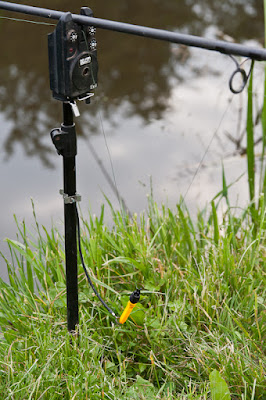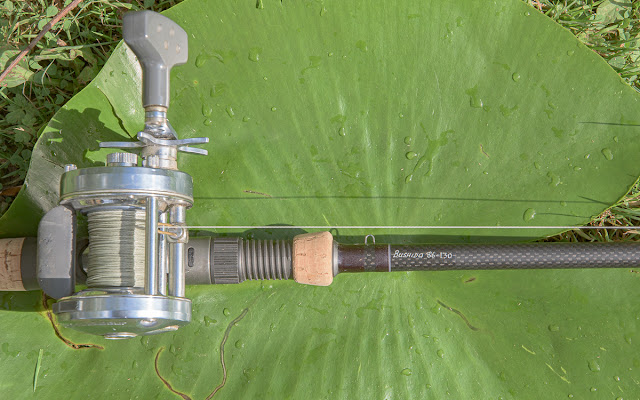For a few years now I've been using leger stems for my eel fishing. I know full well that when the line is tightened they don't stand upright, but once the line is out of the clip they do, which might help the line flow more freely. The way I've been making them is quite simple and so far has withstood casting using two ounce leads. I've tried pulling them apart with my hands and failed so I tested one to destruction using a spring balance which had stretched to eleven pounds when one swivel parted company with the stem.
All they take are a couple of large eye swivels, a rig clip, a length of stiff boom choosing, a buoyant body of some sort and some glue-filled shrink tube.

Squash the small eye on a swivel and the large eye on the other. Clip the lead clip to the now small eyed swivel. Slip a piece of shrink on to the boom tube, fit the squashed eye of a swivel into the end of the boom tube, slide the
shrink over the swivel body and heat with a heat gun. Push the boom tube
through the buoyant body and repeat the swivel attachment at the open end. Push the buoyant body up and the job's done.
Eel fishing is a frustrating pastime and it always gets me thinking. My first tackle modification spurred on by an eeling problem was brought about by my ineptitude at getting the wriggling buggers in the landing net at the first attempt in the dark. I can never see where the net cord is and far too many times I've lifted the net before an eel has been right over it. Give them an inch of tail over the cord and they back out!
I should have thought of the obvious answer years ago. Paint the last eighteen inches or so of the landing net arms white. For good measure I put a wrap of reflective tape at each end of the paint, then applied epoxy rod varnish over it all for protection. So far I haven't had to make any second or third netting attempts.
My second tackle development was to solve the rig storage issue. Coiling hooklinks in grip-seal bags is OK with wire which springs straight, but the hard mono links I use with worm baits takes on a curve. I had been putting a few in a stiff plastic hook packet. They had a tendency to tangle and I thought there must be a neater way.
Being old I dredged up a memory of an article in a 1970s about using a cigar tube to store hooklinks by putting the hook over the open end and tucking the other end under a rubber band. I found some plastic tube and gave it a try. It was OK but the rubber band was a fiddle to use and the swivel or loop ends flapped about if they weren't all the same length.
Lateral thinking came to my rescue and I tried a piece of scrap Duplon rod handle material and may pins as used on many a flat rig board. The Rick Stick was born!
I didn't like the price of the commercially available fittings intended for this which attach between the rest head and the buzzer bar. They didn't look very long either. No matter where I rummaged there was nothing to be found that I thought could be adapted for the purpose. Staring at the pod one night hoping for an indicator to move it struck me that the bobbins didn't have to be attached to an upright. A cross bar would do just as well.
I have lots of old banksticks in various stages of decay. One was cut to a suitable length and temporarily fitted to the pod using a couple of hair bands. In practice the hair bands weren't up to much but they let me prove the concept worked. Which it did.
I tidied up the cross bar by wrapping black insulation tape around it and fitting a plastic cap to each end. A couple of Terry (tool) clips were attached using self-tapping screws so the bar can be moved up and down and removed altogether when not required. I would have used nuts and bolts but I had none suitably long. If the screws fail I'll have to get some.
In practice the set up works well. An unexpected bonus is that by turning the clips that the bobbins are attached to round the cross bar I can finely tune the indicators without having to fiddle with the reels. Neat. It's also occurred to me that by attaching the cross bar to the front of the pod I can use the indicators on a drop of almost twice the length of the cords should I want to.
The final (?) mod to the bobbin set up was to acquire some better cord. Entering '1.5mm braided cord' into Google soon tracked some down and had 5m winging its way to me. A big knot in one end to stop it pulling through the hole in the Terry clip and a piece of the magic glue-filled shrink at the other to form a loop to take a clip and everything was complete. The bobbins did their job again, dropping off and the eels taking line freely. As usual my conversion rate was pitiful!
I wonder what I'll be tinkering with next?
































